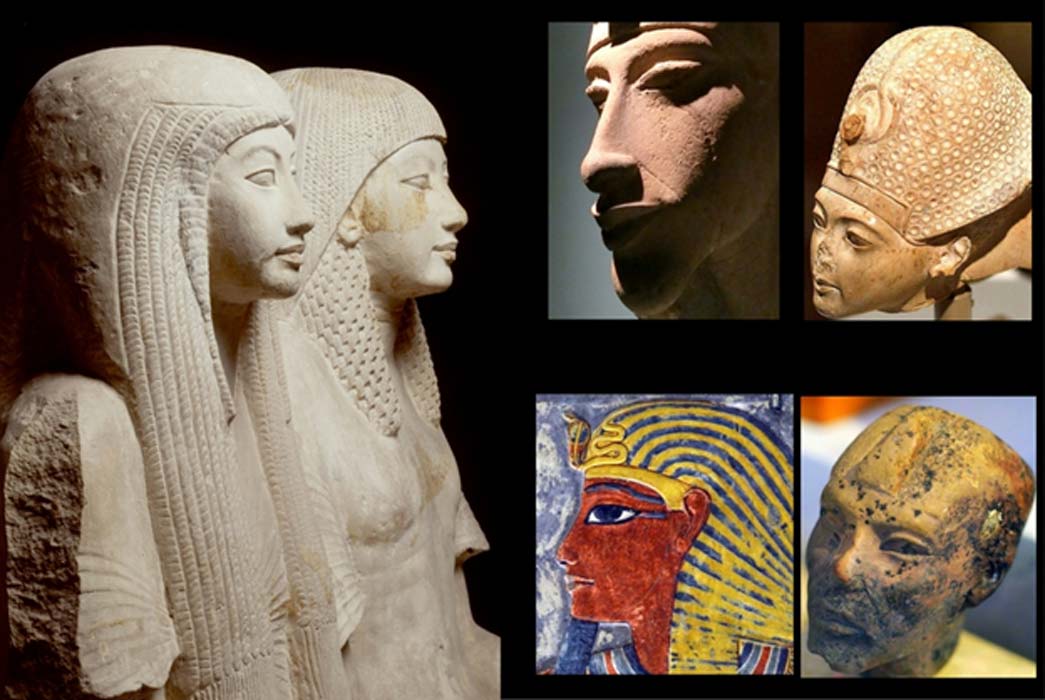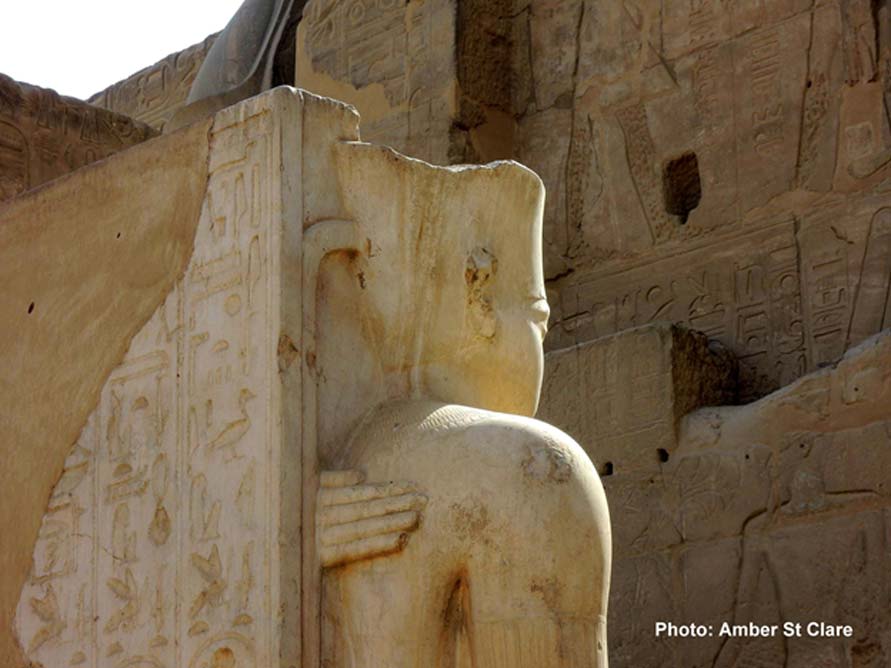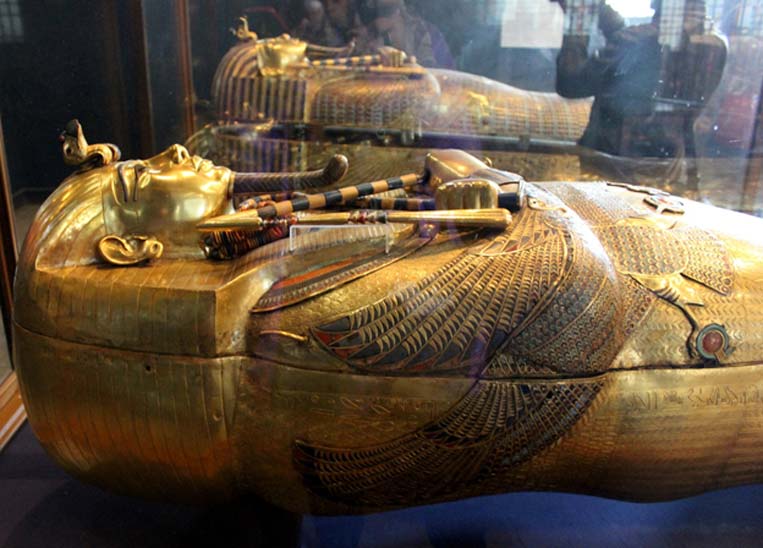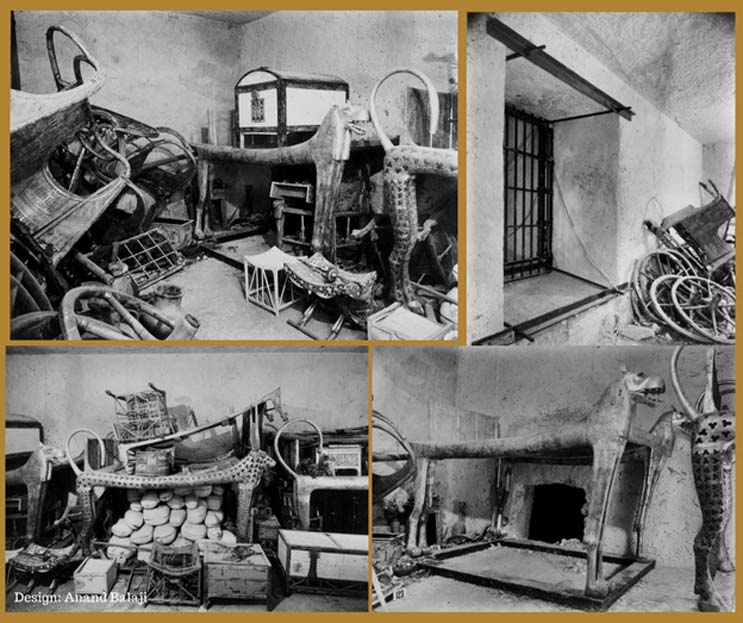
The Many Mysteries of Maya: Faith, Labor and Love for the Motherland–Part II
The sudden and unfortunate death of Tutankhamun created an unprecedented power vacuum that had to be filled swiftly, if order was to be maintained in the Egyptian state. It is probable that a tussle ensued between Horemheb and Aye as they battled for supremacy. The one key individual who went about his business as usual was Maya. He not only ensured that the boy-king’s tomb was well-stocked, but that the deceased ruler also received a proper burial, considering his intended sepulcher in the Western Valley was unfinished.

The hand of Ankhesenamun rests protectively upon the back of her husband and half-brother Pharaoh Tutankhamun in this statue at Luxor Temple. The next ruler, elderly King Aye, probably married the young queen to legitimize his claim to the throne.
AFTER TUTANKHAMUN
Based on the evidence at hand we can safely conclude that Tutankhamun died suddenly. The reasons though are not clear as Dr Marianne Eaton-Krauss explains, “Theories about what led to Tutankhamun’s death are legion, with no end to speculation in sight. Some of the suggestions are grounded on scientific analyses of his mummy; others (like those attempting to identify what might have ‘ailed’ Akhenaten) are inspired by the representations of the king in relief and painting – which have been incorrectly interpreted as showing him to be frail or even crippled. Regardless, the results are inconclusive. About the only definitive statement that can be made is that the mummy provides no evidence for supposing that he was murdered by a blow to the head.”

(Foreground) The dazzling, solid gold innermost coffin of King Tutankhamun and (Background) the middle coffin; from a nest of three. As Treasurer, Maya was in charge of assembling funerary goods destined for KV62. Egyptian Museum, Cairo. (CC BY-SA 4.0)
Nonetheless, upon the death of the boy-king—with whom he obviously shared a close bond—it would have fallen to Maya to assemble the incredible trove of ritualistic and personal objects. Later, this “Fan bearer on the King’s right hand” was also tasked with tidying up after the two robberies in KV62—once again, in the company of Djehutymose, who scribbled his name on a calcite jar stand found in the Annexe. The team of necropolis restorers ‘seem to have been in almost as great a hurry as the thieves, and their work of reparation was sadly scamped’, noted Howard Carter.

Different views of the undecorated KV62 Antechamber shows what Carter called a state of “organized chaos” which was due to robberies in antiquity. This room was stocked with approximately 700 objects which Maya would have personally supervised. (Public Domain)




